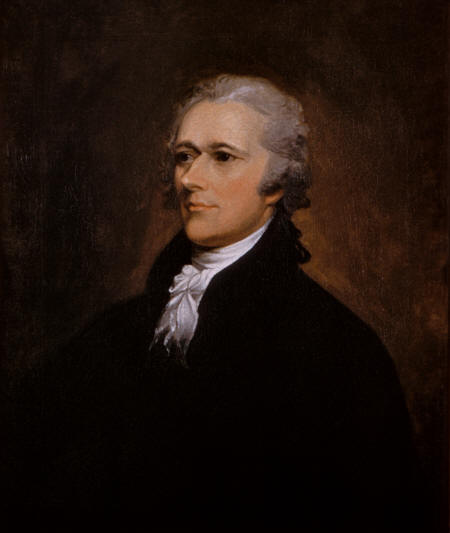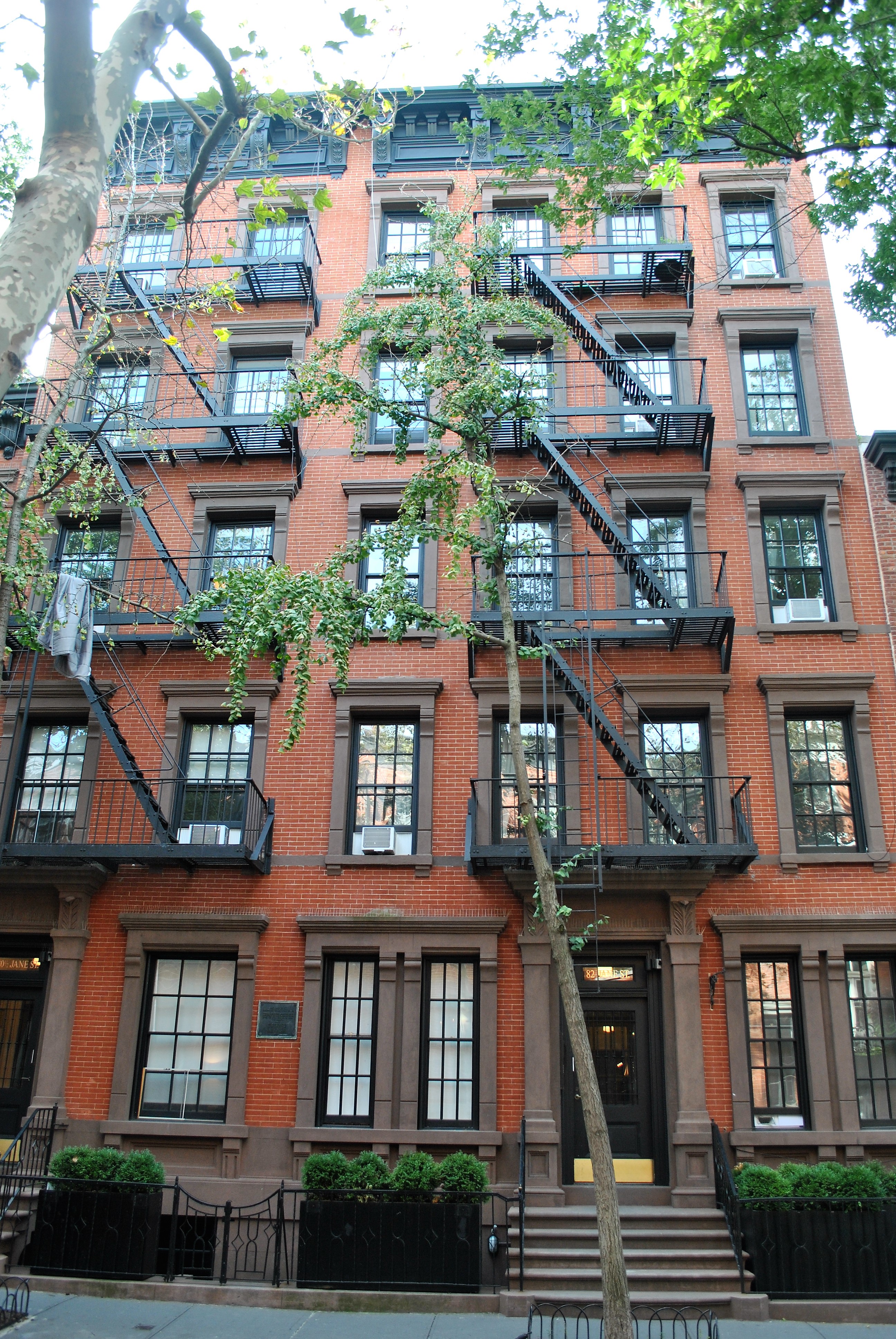Queer Places:
82 Jane St, New York, NY 10014
Hamilton Grange National Memorial, 409 W 141st St, New York, NY 10031, Stati Uniti
 Alexander Hamilton (January 11, 1755 or 1757 – July 12, 1804) was an
American statesman and one of the Founding Fathers of the United States. He
was an influential interpreter and promoter of the U.S. Constitution, as well
as the founder of the nation's financial system, the Federalist Party, the
United States Coast Guard, and The New York Post newspaper. As the
first Secretary of the Treasury, Hamilton was the main author of the economic
policies of the George Washington administration. He took the lead in the
funding of the states' debts by the Federal government, as well as the
establishment of a national bank, a system of tariffs, and friendly trade
relations with Britain. His vision included a strong central government led by
a vigorous executive branch, a strong commercial economy, with a national bank
and support for manufacturing, plus a strong military. Thomas Jefferson was
his leading opponent, arguing for agrarianism and smaller government.
Alexander Hamilton (January 11, 1755 or 1757 – July 12, 1804) was an
American statesman and one of the Founding Fathers of the United States. He
was an influential interpreter and promoter of the U.S. Constitution, as well
as the founder of the nation's financial system, the Federalist Party, the
United States Coast Guard, and The New York Post newspaper. As the
first Secretary of the Treasury, Hamilton was the main author of the economic
policies of the George Washington administration. He took the lead in the
funding of the states' debts by the Federal government, as well as the
establishment of a national bank, a system of tariffs, and friendly trade
relations with Britain. His vision included a strong central government led by
a vigorous executive branch, a strong commercial economy, with a national bank
and support for manufacturing, plus a strong military. Thomas Jefferson was
his leading opponent, arguing for agrarianism and smaller government.
Hamilton was born out of wedlock in Charlestown, Nevis. Orphaned as a
child, he was taken in by a prosperous merchant. As a precocious young
teenager he was sent to New York to pursue his education. Hamilton took an
early role as the American Revolutionary War began. In 1777, he became a
senior aide to General Washington in running the new Continental Army. After
the war, Hamilton was elected as a representative to the Congress of the
Confederation from New York. He resigned to practice law, and founded the Bank
of New York.
Hamilton was a leader in seeking to replace the weak national government,
and led the Annapolis Convention in 1786, which spurred Congress to call a
Constitutional Convention in Philadelphia. He helped achieve ratification by
writing 51 of the 85 installments of The Federalist Papers, which to
this day remain the one of the most important references for Constitutional
interpretation.
Hamilton led the Treasury Department as a trusted member of President
Washington's first Cabinet. He was a nationalist who emphasized strong central
government and successfully argued that the implied powers of the Constitution
provided the legal authority to fund the national debt, assume states' debts,
and create the government-backed Bank of the United States. These programs
were funded primarily by a tariff on imports, and later also by a
controversial tax on whiskey. To overcome localism, Hamilton mobilized a
nationwide network of friends of the government, especially bankers and
businessmen, which became the Federalist Party. A major issue in the emergence
of the American two-party system was the Jay Treaty, largely designed by
Hamilton in 1794. It established friendly trade relations with Britain, to the
chagrin of France and supporters of the French Revolution. Hamilton played a
central role in the Federalist party, which dominated national and state
politics until it lost the election of 1800 to Jefferson's
Democratic-Republican Party.
In 1795, he returned to the practice of law in New York. In 1798–99, under
President Adams, Hamilton called for mobilization against France and became
Commanding General of a newly reconstituted U.S. Army, which he modernized and
readied for war. Hamilton's army did not see combat in the Quasi-War, and
Hamilton was outraged by Adams' diplomatic avoidance of combat with France.
His opposition to Adams' re-election helped cause the Federalist party defeat
in 1800. Jefferson and Aaron Burr tied for the presidency in the electoral
college in 1801, and Hamilton helped to defeat Burr, whom he found
unprincipled, and to elect Jefferson despite philosophical differences.

82 Jane St, New York, NY 10014
Hamilton continued his legal and business activities in New York City, and
was active in ending the legality of the international slave trade. Vice
President Burr ran for governor of New York State in 1804, and Hamilton
campaigned against him as unworthy. Taking offense, Burr challenged him to a
duel in which Burr shot and mortally wounded Hamilton, who died the next day
on July 12, 1804.
During the war, Hamilton became close friends with several fellow officers.
His letters to the
Marquis de Lafayette[53]
and to John Laurens,
employing the sentimental literary conventions of the late eighteenth century
and alluding to Greek history and mythology,[54]
have been read by
Jonathan Ned
Katz, as revealing a homosocial or perhaps homosexual relationship.[55]
On the other hand, biographer Gregory D. Massey dismisses all speculations on
a Laurens-Hamilton relationship as unsubstantiated, describing their
friendship as purely platonic camaraderie and placing their correspondence in
the context of the flowery penmanship of the time.[56]
My published books:


BACK TO HOME PAGE

- https://en.wikipedia.org/wiki/Alexander_Hamilton
 Alexander Hamilton (January 11, 1755 or 1757 – July 12, 1804) was an
American statesman and one of the Founding Fathers of the United States. He
was an influential interpreter and promoter of the U.S. Constitution, as well
as the founder of the nation's financial system, the Federalist Party, the
United States Coast Guard, and The New York Post newspaper. As the
first Secretary of the Treasury, Hamilton was the main author of the economic
policies of the George Washington administration. He took the lead in the
funding of the states' debts by the Federal government, as well as the
establishment of a national bank, a system of tariffs, and friendly trade
relations with Britain. His vision included a strong central government led by
a vigorous executive branch, a strong commercial economy, with a national bank
and support for manufacturing, plus a strong military. Thomas Jefferson was
his leading opponent, arguing for agrarianism and smaller government.
Alexander Hamilton (January 11, 1755 or 1757 – July 12, 1804) was an
American statesman and one of the Founding Fathers of the United States. He
was an influential interpreter and promoter of the U.S. Constitution, as well
as the founder of the nation's financial system, the Federalist Party, the
United States Coast Guard, and The New York Post newspaper. As the
first Secretary of the Treasury, Hamilton was the main author of the economic
policies of the George Washington administration. He took the lead in the
funding of the states' debts by the Federal government, as well as the
establishment of a national bank, a system of tariffs, and friendly trade
relations with Britain. His vision included a strong central government led by
a vigorous executive branch, a strong commercial economy, with a national bank
and support for manufacturing, plus a strong military. Thomas Jefferson was
his leading opponent, arguing for agrarianism and smaller government. 

